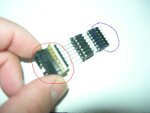spman
Advanced Member level 4

Hi,
Why standard jtag connector has multiple grounds?
The grounds are clearly shorted. so i think it is ineffective to have multiple grounds and a smaller connector containing one ground is feasible.
what happens if i make small the connector in my PCB? i want to connect the programmer connector with one line of GND to the PCB.
Why standard jtag connector has multiple grounds?
The grounds are clearly shorted. so i think it is ineffective to have multiple grounds and a smaller connector containing one ground is feasible.
what happens if i make small the connector in my PCB? i want to connect the programmer connector with one line of GND to the PCB.








